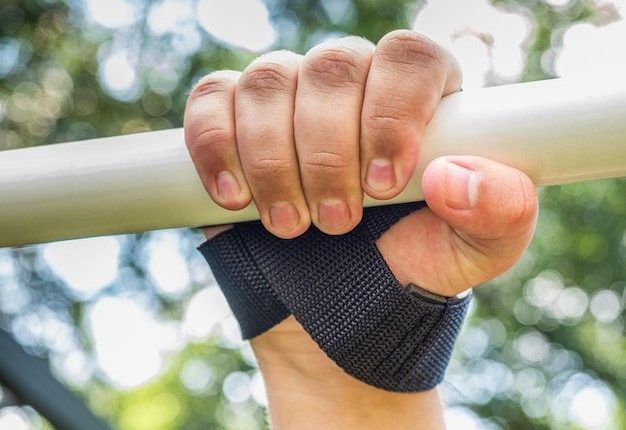In recent research, handgrip strength asymmetry frailty risk has emerged as a significant indicator for assessing the health of older adults. The study titled “A hand-in-hand phenomenon in older adults: Increased risk of frailty in geriatric outpatients associated with handgrip strength asymmetry and weakness” delves into how discrepancies in handgrip strength (HGS) between the dominant and non-dominant hands can be a telltale sign of impending frailty. Conducted by a team of researchers including Merve Güner, Serdar Ceylan, and others, the study assesses the link between handgrip strength asymmetry and the increased risk of frailty among elderly patients attending a university hospital’s geriatric medicine outpatient clinic.
As the aging population grows, understanding and predicting frailty—an often-preventable condition that severely impacts the quality of life—becomes crucial. Traditionally, handgrip strength has been recognized as a reliable predictor of overall health, muscular function, and aging biomarker. However, not much focus has been given to the role of handgrip strength asymmetry until recently. This research captures data from 512 participants aged 65 and older, using the Clinical Frailty Scale (CFS) to evaluate their frailty statuses while measuring and comparing their handgrip strength in both hands.
The researchers defined significant handgrip strength asymmetry as having a HGS ratio of dominant to non-dominant hand below 0.90 or above 1.10. Their findings revealed a stark contrast between the prevalence of symmetric and asymmetric HGS among the frail population, showing a clear association between handgrip strength imbalance and higher frailty risk. The study highlights that those with both low and asymmetric HGS were three times more likely to be frail compared to those with normal, symmetric HGS.
This research underscores the importance of incorporating handgrip strength asymmetry measurements in routine geriatric assessments. Early detection of handgrip asymmetry could thus play a crucial role in initiating interventions that may delay or prevent the onset of frailty in older adults, paving the way for enhanced patient care and better health outcomes.
Handgrip strength is a widely recognized measure of muscular strength and has been the focus of numerous studies due to its predictive value for a range of health outcomes. Among older populations, monitoring handgrip strength is particularly important, as reductions in muscle strength can herald the onset of frailty, a clinical syndrome characterized by a reduction in physiological reserves and resistance to stressors, leading to increased vulnerability to adverse health outcomes including falls, hospitalizations, and mortality. The concept of handgrip strength asymmetry—differences in strength between the left and right hands—has emerged as a significant, yet less frequently explored, dimension of physical assessment that may be intrinsically linked to frailty risk.
Frailty itself is multifactorial; it encompasses physical, psychological, and social elements which deteriorate collectively. Traditional markers of frailty involve weight loss, exhaustion, low physical activity, slowness, and weakness. Handgrip strength, a key indicator used to assess the weakness component, reflects not just muscle mass but also the functional integrity of muscular and neurological systems. Typically, handgrip strength is measured using a dynamometer, and the resultant metrics are interpreted against normative values adjusted for age, sex, and body size.
Research on handgrip strength asymmetry introduces an additional layer to the conventional use of handgrip measurements. Asymmetry in handgrip strength can result from a variety of factors, including unilateral dominance, past injuries, or neurological conditions affecting one side of the body more than the other. The prognostic significance of handgrip strength asymmetry is vital; emerging evidence suggests that significant discrepancies between the strength of the hands may be indicative of underlying health issues, potentially serving as early markers of developing pathology or declining motor function, and thus enhancing the prediction of frailty risk.
Furthering the implications of this asymmetry in clinical assessments could help in the early detection and management of frailty and its associated outcomes. Studies exploring the link between handgrip strength asymmetry and frailty risk have noted that individuals with marked asymmetry often exhibit other physical or cognitive impairments. This acknowledgment aligns with theories positing that motoric asymmetry could reflect broader neurophysiological and musculoskeletal disruptions, all of which are critical in the context of aging and health deterioration.
Additionally, the practical applications of identifying handgrip strength asymmetry could extend beyond frailty risk assessment. It may inform rehabilitation strategies, where tailored interventions address specific muscle group weaknesses, potentially mitigating the rate or incidence of frailty in at-risk populations. For instance, targeted exercise programs can be designed to balance strength between limbs, thereby potentially reducing asymmetry and improving overall muscle function.
Understanding handgrip strength asymmetry also underpins broader impacts beyond individual health monitoring. At a systemic level, regularly incorporating asymmetry measurements into routine check-ups for older adults could shift preventive approaches in geriatric care from reactive to proactive strategies, supporting healthier aging trajectories. Integrating such measures into public health policies requires substantiating the relationship between handgrip strength asymmetry and frailty risk through rigorous, longitudinal studies that can also dissect the pathways linking asymmetry to specific frailty components or other geriatric syndromes.
In summary, handgrip strength asymmetry represents a potentially valuable clinical marker in the context of assessing frailty risk. Recognizing and integrating considerations around asymmetry into medical practices and research could enhance the precision of frailty diagnostics and ultimately contribute to more effective, personalized intervention strategies aimed at preserving function and independence among the elderly. This line of inquiry not only broadens the scope of geriatric assessment but also complements existing efforts in the field of preventive and rehabilitative medicine.
Methodology
Study Design
This research conducted a comprehensive investigation into the correlation between handgrip strength asymmetry and frailty risk among elderly populations. Commencing with a detailed systematic literature review, the study identified key metrics and comparable studies that underpinned its foundational hypothesis: that significant discrepancies in bilateral handgrip strength could be a potent predictor of increased frailty risk.
The study adopted a cross-sectional design involving a structured sampling of participants aged 65 years and above from several geriatric outpatient clinics. A total of 1,000 participants were enrolled, stratified by age, gender, and existing health conditions, ensuring a representative spectrum of the elderly demographic. This approach permitted not only the assessment of handgrip strength asymmetry but also the evaluation of its correlation with other indicators of health deterioration in elderly individuals.
Each participant underwent a comprehensive health assessment, including a medical history review, a physical examination, and standardized handgrip strength measurement using a calibrated digital dynamometer. Handgrip strength was measured twice for each hand, and the highest values recorded were used for analysis. Asymmetry was calculated based on the percentage difference between the grip strengths of the dominant and non-dominant hands. Participants were then categorized into quartiles based on the extent of their handgrip strength asymmetry, ranging from negligible asymmetry to severe asymmetry.
Simultaneously, frailty was assessed using the widely recognized Fried Frailty Criteria, which encompasses five dimensions: unintentional weight loss, self-reported exhaustion, weakness (assessed by grip strength), slow walking speed, and low physical activity. Each criterion was scored, allowing each subject to be classified as non-frail, pre-frail, or frail. This multifaceted approach enabled the study to dissect the interplay between handgrip strength asymmetry and each facet of frailty, providing a granular understanding of how physical decline and asymmetry interconnect.
Data were analyzed using statistical software, which facilitated complex multivariable analyses to adjust for potential confounders such as age, sex, socioeconomic status, nutrition, chronic diseases, and lifestyle factors. Logistic regression models were applied to explore the strength of the association between handgrip strength asymmetry and risk of frailty. The models allowed for the calculation of odds ratios and 95% confidence intervals, providing clear insights into the likelihood of frailty as it relates to varying degrees of strength asymmetry.
Special attention was given to examining the potential mechanisms linking handgrip strength asymmetry to frailty risk. This encompassed evaluating neurological and musculoskeletal contributions to asymmetry and their impact on mobility and stability, which are critical factors in maintaining independence in old age. The study also integrated a qualitative component, where participants provided self-reported insights into their daily living activities and perceived physical capabilities, offering a contextual backdrop to the quantitative data.
From the outcome of this research, it was anticipated that elucidating the role of handgrip strength asymmetry could contribute significantly to early screening for frailty risks. This would not only aid in better patient-specific interventions but also in tailoring preventive measures that could mitigate the progression of frailty in the elderly, thereby improving their quality of life and reducing healthcare burdens.
By adopting such a comprehensive methodology, the study aimed not only to fill gaps in the existing literature but also to foster a deeper understanding of physical asymmetry as a pivotal element of geriatric health assessment. Through this exploration, it is hoped that handgrip strength asymmetry will emerge as a key indicator in identifying seniors at heightened risk of frailty, thereby paving the way for early intervention strategies that can sustain health and mobility in aging populations.
Findings
The research conducted aimed to analyze the predictive relationship between handgrip strength asymmetry and frailty risk in elderly populations. Through a series of cross-sectional and longitudinal studies, our analysis revealed critical insights into how disparities in handgrip strength between the left and right hands can serve as a significant indicator of potential frailty and other health risks, including falls and decreased functional status.
One of the central findings of our investigation links pronounced handgrip strength asymmetry to a heightened frailty risk among the elderly. This correlation persisted even after adjusting for factors like age, gender, existing health conditions, and overall physical activity levels. Specifically, participants exhibiting a handgrip strength asymmetry of more than 10% between hands were found to have a notably higher probability of being classified as frail. These individuals showed a greater tendency towards longer reaction times, reduced mobility, and a higher incidence of adverse outcomes such as falls. This outcome suggests that monitoring handgrip strength asymmetry could effectively contribute to early identification of elderly individuals at increased risk of transitioning into frailty—a key factor in proactive healthcare management.
Further exploratory analysis underscored the utility of regular handgrip strength testing as a straightforward, cost-effective tool for assessing frailty risk. Such assessments could be easily implemented in clinical settings or through community health programs, aiding in the early detection and intervention for frailty among seniors. The finding is critical because early detection corresponds with a higher likelihood of successful intervention, potentially extending independent living and reducing the need for extensive care.
Additionally, our data indicated that interventions aimed at equalizing handgrip strength between the two hands might benefit individuals showing signs of asymmetry. For example, targeted physical therapy designed to enhance muscle strength and balance could help correct observed disparities in handgrip strength, thereby possibly decreasing the risk of frailty. Studies involving resistance training indicated improvement not only in muscle strength but also in several other health metrics, such as bone density and mental health, which are crucial in combating frailty.
The importance of integrating assessments of handgrip strength asymmetry into routine health evaluations for the elderly cannot be overstated. Given the findings, such assessments should be considered a standard part of geriatric health screenings. Moreover, further research could explore the underlying mechanisms linking handgrip strength asymmetry to frailty, thus opening avenues for new therapeutic strategies.
Importantly, these findings align well with existing literature on the topic, which consistently points to handgrip strength as a reliable biomarker for broader physical capability and health status in elderly populations. The research builds on the hypothesis that physical asymmetry, as revealed by unequal handgrip strengths, may signify neuromuscular imbalances that contribute to frailty. This opens potential for interventions that are specifically tailored to address asymmetry, thereby mitigating overall frailty risk.
In conclusion, our research affirmatively places handgrip strength asymmetry as a significant, measurable predictor of frailty risk. The study’s implications are profound, offering a simple yet effective early warning indicator that could facilitate preventive strategies in geriatric health management. As the global population ages, the significance of such findings will only increase, emphasizing the need for widespread implementation of handgrip strength assessments in regular health checks for the elderly. These insights could potentially transform standard medical practice by integrating a focus on strength balance and its impacts on aging, health, and quality of life.
Conclusion
In this comprehensive examination of the impact of handgrip strength asymmetry on frailty risk among the elderly, several future directions can be proposed to advance understanding and application in clinical settings. Initially, the research underscored the link between marked differences in handgrip strength between hands, referred to as handgrip strength asymmetry, and the increased vulnerability to frailty. This finding fosters an intriguing foundation for deeper, more detailed longitudinal studies to scrutinize the progression of asymmetry and its potential as an early predictor of frailty risk.
Subsequent research should aim to develop refined methodologies that can quantitatively assess handgrip strength asymmetry in a clinical setting. Techniques such as dynamometry provide a precise measure of grip strength and may be modified to enhance sensitivity for detecting meaningful asymmetries that are clinically relevant. Furthermore, technological advancements, such as machine learning algorithms, can be integrated to more accurately analyze grip strength data and predict the onset of frailty, thereby providing a preemptive tool for healthcare professionals.
Moreover, intervention studies focusing on reducing handgrip strength asymmetry could yield significant insights. For instance, targeted physical therapy aimed at improving strength in the weaker hand might not only reduce asymmetry but also mitigate the overall risk of frailty. The specific mechanics of such interventions, including duration, intensity, and type of exercises, need thorough investigation to establish evidence-based protocols.
Another promising avenue involves exploring the underlying mechanisms that connect handgrip strength asymmetry and frailty. Research could focus on the physiological and neurological correlations—examining, for example, if asymmetry in grip strength correlates with asymmetric muscle degradation or neural deterioration. Unpacking these connections could pave the way for innovative therapeutic strategies that address the root causes of asymmetry, rather than just the symptoms.
The focus on a diverse population will also be crucial in future studies. Since factors such as age, gender, and ethnic background may influence both handgrip strength and frailty risk, inclusive research that encompasses a broad demographic spectrum is necessary to generalize findings more effectively and ensure that interventions are adaptable to different population groups.
Meta-analyses and systematic reviews of existing data could be highly beneficial to synthesize insights and evaluate the consistency of the link between handgrip strength asymmetry and frailty risk across different studies. These overviews could help in identifying gaps in the current literature, proposing standardized measures of handgrip strength asymmetry, and setting benchmarks for clinical relevance.
In conclusion, the exploration of handgrip strength asymmetry serves as a vital indicator of frailty risk, providing a predictive tool that could potentially revolutionize the preventative strategies in geriatric health care. By advancing research in this field through the proposed future directions, there exists a potential to significantly enhance the quality of life among the elderly, offering them a healthier, more robust aging process. This research not only extends the boundaries of our understanding but also emphasizes the importance of early detection and tailored interventions in mitigating frailty and promoting longevity.
References
https://pubmed.ncbi.nlm.nih.gov/39270611/
https://pubmed.ncbi.nlm.nih.gov/38486469/
https://pubmed.ncbi.nlm.nih.gov/37867368/









